Ziming Wang
CombatVLA: An Efficient Vision-Language-Action Model for Combat Tasks in 3D Action Role-Playing Games
Mar 12, 2025Abstract:Recent advances in Vision-Language-Action models (VLAs) have expanded the capabilities of embodied intelligence. However, significant challenges remain in real-time decision-making in complex 3D environments, which demand second-level responses, high-resolution perception, and tactical reasoning under dynamic conditions. To advance the field, we introduce CombatVLA, an efficient VLA model optimized for combat tasks in 3D action role-playing games(ARPGs). Specifically, our CombatVLA is a 3B model trained on video-action pairs collected by an action tracker, where the data is formatted as action-of-thought (AoT) sequences. Thereafter, CombatVLA seamlessly integrates into an action execution framework, allowing efficient inference through our truncated AoT strategy. Experimental results demonstrate that CombatVLA not only outperforms all existing models on the combat understanding benchmark but also achieves a 50-fold acceleration in game combat. Moreover, it has a higher task success rate than human players. We will open-source all resources, including the action tracker, dataset, benchmark, model weights, training code, and the implementation of the framework at https://combatvla.github.io/.
FanChuan: A Multilingual and Graph-Structured Benchmark For Parody Detection and Analysis
Feb 23, 2025



Abstract:Parody is an emerging phenomenon on social media, where individuals imitate a role or position opposite to their own, often for humor, provocation, or controversy. Detecting and analyzing parody can be challenging and is often reliant on context, yet it plays a crucial role in understanding cultural values, promoting subcultures, and enhancing self-expression. However, the study of parody is hindered by limited available data and deficient diversity in current datasets. To bridge this gap, we built seven parody datasets from both English and Chinese corpora, with 14,755 annotated users and 21,210 annotated comments in total. To provide sufficient context information, we also collect replies and construct user-interaction graphs to provide richer contextual information, which is lacking in existing datasets. With these datasets, we test traditional methods and Large Language Models (LLMs) on three key tasks: (1) parody detection, (2) comment sentiment analysis with parody, and (3) user sentiment analysis with parody. Our extensive experiments reveal that parody-related tasks still remain challenging for all models, and contextual information plays a critical role. Interestingly, we find that, in certain scenarios, traditional sentence embedding methods combined with simple classifiers can outperform advanced LLMs, i.e. DeepSeek-R1 and GPT-o3, highlighting parody as a significant challenge for LLMs.
A Deep Learning Framework with Geographic Information Adaptive Loss for Remote Sensing Images based UAV Self-Positioning
Feb 22, 2025Abstract:With the expanding application scope of unmanned aerial vehicles (UAVs), the demand for stable UAV control has significantly increased. However, in complex environments, GPS signals are prone to interference, resulting in ineffective UAV positioning. Therefore, self-positioning of UAVs in GPS-denied environments has become a critical objective. Some methods obtain geolocation information in GPS-denied environments by matching ground objects in the UAV viewpoint with remote sensing images. However, most of these methods only provide coarse-level positioning, which satisfies cross-view geo-localization but cannot support precise UAV positioning tasks. Consequently, this paper focuses on a newer and more challenging task: precise UAV self-positioning based on remote sensing images. This approach not only considers the features of ground objects but also accounts for the spatial distribution of objects in the images. To address this challenge, we present a deep learning framework with geographic information adaptive loss, which achieves precise localization by aligning UAV images with corresponding satellite imagery in fine detail through the integration of geographic information from multiple perspectives. To validate the effectiveness of the proposed method, we conducted a series of experiments. The results demonstrate the method's efficacy in enabling UAVs to achieve precise self-positioning using remote sensing imagery.
ChineseSimpleVQA -- "See the World, Discover Knowledge": A Chinese Factuality Evaluation for Large Vision Language Models
Feb 19, 2025Abstract:The evaluation of factual accuracy in large vision language models (LVLMs) has lagged behind their rapid development, making it challenging to fully reflect these models' knowledge capacity and reliability. In this paper, we introduce the first factuality-based visual question-answering benchmark in Chinese, named ChineseSimpleVQA, aimed at assessing the visual factuality of LVLMs across 8 major topics and 56 subtopics. The key features of this benchmark include a focus on the Chinese language, diverse knowledge types, a multi-hop question construction, high-quality data, static consistency, and easy-to-evaluate through short answers. Moreover, we contribute a rigorous data construction pipeline and decouple the visual factuality into two parts: seeing the world (i.e., object recognition) and discovering knowledge. This decoupling allows us to analyze the capability boundaries and execution mechanisms of LVLMs. Subsequently, we evaluate 34 advanced open-source and closed-source models, revealing critical performance gaps within this field.
FAST-LIVO2 on Resource-Constrained Platforms: LiDAR-Inertial-Visual Odometry with Efficient Memory and Computation
Jan 23, 2025Abstract:This paper presents a lightweight LiDAR-inertial-visual odometry system optimized for resource-constrained platforms. It integrates a degeneration-aware adaptive visual frame selector into error-state iterated Kalman filter (ESIKF) with sequential updates, improving computation efficiency significantly while maintaining a similar level of robustness. Additionally, a memory-efficient mapping structure combining a locally unified visual-LiDAR map and a long-term visual map achieves a good trade-off between performance and memory usage. Extensive experiments on x86 and ARM platforms demonstrate the system's robustness and efficiency. On the Hilti dataset, our system achieves a 33% reduction in per-frame runtime and 47% lower memory usage compared to FAST-LIVO2, with only a 3 cm increase in RMSE. Despite this slight accuracy trade-off, our system remains competitive, outperforming state-of-the-art (SOTA) LIO methods such as FAST-LIO2 and most existing LIVO systems. These results validate the system's capability for scalable deployment on resource-constrained edge computing platforms.
Procedural Fairness and Its Relationship with Distributive Fairness in Machine Learning
Jan 12, 2025Abstract:Fairness in machine learning (ML) has garnered significant attention in recent years. While existing research has predominantly focused on the distributive fairness of ML models, there has been limited exploration of procedural fairness. This paper proposes a novel method to achieve procedural fairness during the model training phase. The effectiveness of the proposed method is validated through experiments conducted on one synthetic and six real-world datasets. Additionally, this work studies the relationship between procedural fairness and distributive fairness in ML models. On one hand, the impact of dataset bias and the procedural fairness of ML model on its distributive fairness is examined. The results highlight a significant influence of both dataset bias and procedural fairness on distributive fairness. On the other hand, the distinctions between optimizing procedural and distributive fairness metrics are analyzed. Experimental results demonstrate that optimizing procedural fairness metrics mitigates biases introduced or amplified by the decision-making process, thereby ensuring fairness in the decision-making process itself, as well as improving distributive fairness. In contrast, optimizing distributive fairness metrics encourages the ML model's decision-making process to favor disadvantaged groups, counterbalancing the inherent preferences for advantaged groups present in the dataset and ultimately achieving distributive fairness.
Compression with Global Guidance: Towards Training-free High-Resolution MLLMs Acceleration
Jan 09, 2025Abstract:Multimodal large language models (MLLMs) have attracted considerable attention due to their exceptional performance in visual content understanding and reasoning. However, their inference efficiency has been a notable concern, as the increasing length of multimodal contexts leads to quadratic complexity. Token compression techniques, which reduce the number of visual tokens, have demonstrated their effectiveness in reducing computational costs. Yet, these approaches have struggled to keep pace with the rapid advancements in MLLMs, especially the AnyRes strategy in the context of high-resolution image understanding. In this paper, we propose a novel token compression method, GlobalCom$^2$, tailored for high-resolution MLLMs that receive both the thumbnail and multiple crops. GlobalCom$^2$ treats the tokens derived from the thumbnail as the ``commander'' of the entire token compression process, directing the allocation of retention ratios and the specific compression for each crop. In this way, redundant tokens are eliminated while important local details are adaptively preserved to the highest extent feasible. Empirical results across 10 benchmarks reveal that GlobalCom$^2$ achieves an optimal balance between performance and efficiency, and consistently outperforms state-of-the-art token compression methods with LLaVA-NeXT-7B/13B models. Our code is released at \url{https://github.com/xuyang-liu16/GlobalCom2}.
Enhancing Autonomous Driving Safety through World Model-Based Predictive Navigation and Adaptive Learning Algorithms for 5G Wireless Applications
Nov 25, 2024
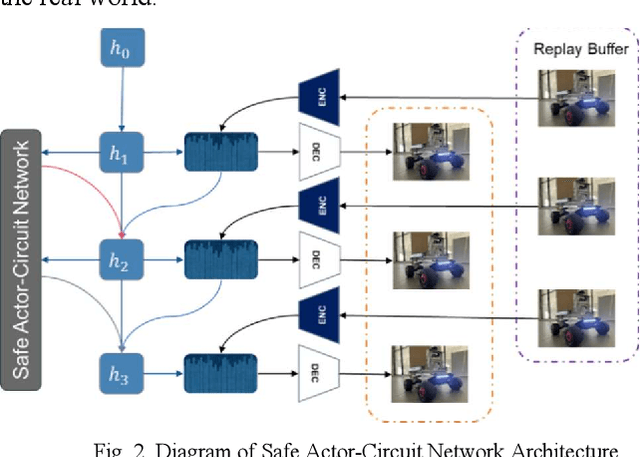

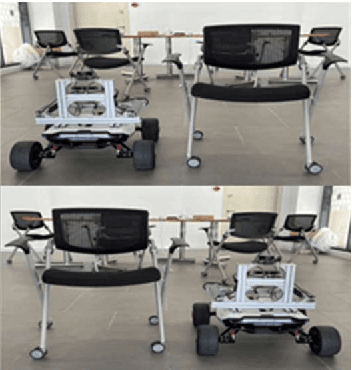
Abstract:Addressing the challenge of ensuring safety in ever-changing and unpredictable environments, particularly in the swiftly advancing realm of autonomous driving in today's 5G wireless communication world, we present Navigation Secure (NavSecure). This vision-based navigation framework merges the strengths of world models with crucial safety-focused decision-making capabilities, enabling autonomous vehicles to navigate real-world complexities securely. Our approach anticipates potential threats and formulates safer routes by harnessing the predictive capabilities of world models, thus significantly reducing the need for extensive real-world trial-and-error learning. Additionally, our method empowers vehicles to autonomously learn and develop through continuous practice, ensuring the system evolves and adapts to new challenges. Incorporating radio frequency technology, NavSecure leverages 5G networks to enhance real-time data exchange, improving communication and responsiveness. Validated through rigorous experiments under simulation-to-real driving conditions, NavSecure has shown exceptional performance in safety-critical scenarios, such as sudden obstacle avoidance. Results indicate that NavSecure excels in key safety metrics, including collision prevention and risk reduction, surpassing other end-to-end methodologies. This framework not only advances autonomous driving safety but also demonstrates how world models can enhance decision-making in critical applications. NavSecure sets a new standard for developing more robust and trustworthy autonomous driving systems, capable of handling the inherent dynamics and uncertainties of real-world environments.
Rethinking Structure Learning For Graph Neural Networks
Nov 12, 2024
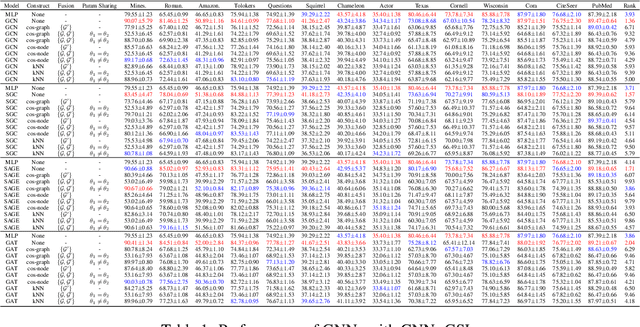
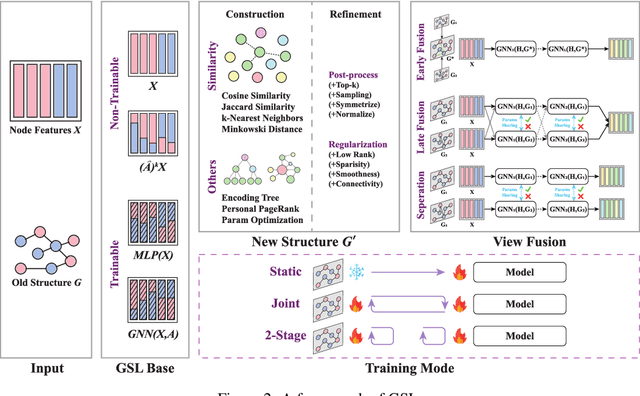

Abstract:To improve the performance of Graph Neural Networks (GNNs), Graph Structure Learning (GSL) has been extensively applied to reconstruct or refine original graph structures, effectively addressing issues like heterophily, over-squashing, and noisy structures. While GSL is generally thought to improve GNN performance, it often leads to longer training times and more hyperparameter tuning. Besides, the distinctions among current GSL methods remain ambiguous from the perspective of GNN training, and there is a lack of theoretical analysis to quantify their effectiveness. Recent studies further suggest that, under fair comparisons with the same hyperparameter tuning, GSL does not consistently outperform baseline GNNs. This motivates us to ask a critical question: is GSL really useful for GNNs? To address this question, this paper makes two key contributions. First, we propose a new GSL framework, which includes three steps: GSL base (the representation used for GSL) construction, new structure construction, and view fusion, to better understand the effectiveness of GSL in GNNs. Second, after graph convolution, we analyze the differences in mutual information (MI) between node representations derived from the original topology and those from the newly constructed topology. Surprisingly, our empirical observations and theoretical analysis show that no matter which type of graph structure construction methods are used, after feeding the same GSL bases to the newly constructed graph, there is no MI gain compared to the original GSL bases. To fairly reassess the effectiveness of GSL, we conduct ablation experiments and find that it is the pretrained GSL bases that enhance GNN performance, and in most cases, GSL cannot improve GNN performance. This finding encourages us to rethink the essential components in GNNs, such as self-training and structural encoding, in GNN design rather than GSL.
SE(3)-bi-equivariant Transformers for Point Cloud Assembly
Jul 12, 2024
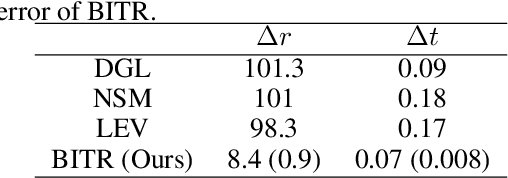
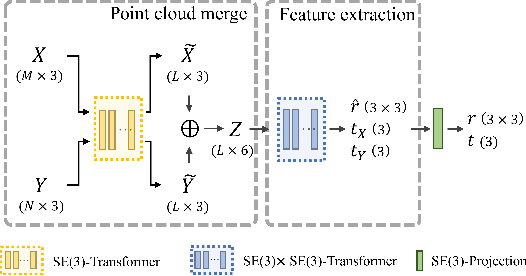

Abstract:Given a pair of point clouds, the goal of assembly is to recover a rigid transformation that aligns one point cloud to the other. This task is challenging because the point clouds may be non-overlapped, and they may have arbitrary initial positions. To address these difficulties, we propose a method, called SE(3)-bi-equivariant transformer (BITR), based on the SE(3)-bi-equivariance prior of the task: it guarantees that when the inputs are rigidly perturbed, the output will transform accordingly. Due to its equivariance property, BITR can not only handle non-overlapped PCs, but also guarantee robustness against initial positions. Specifically, BITR first extracts features of the inputs using a novel $SE(3) \times SE(3)$-transformer, and then projects the learned feature to group SE(3) as the output. Moreover, we theoretically show that swap and scale equivariances can be incorporated into BITR, thus it further guarantees stable performance under scaling and swapping the inputs. We experimentally show the effectiveness of BITR in practical tasks.
 Add to Chrome
Add to Chrome Add to Firefox
Add to Firefox Add to Edge
Add to Edge